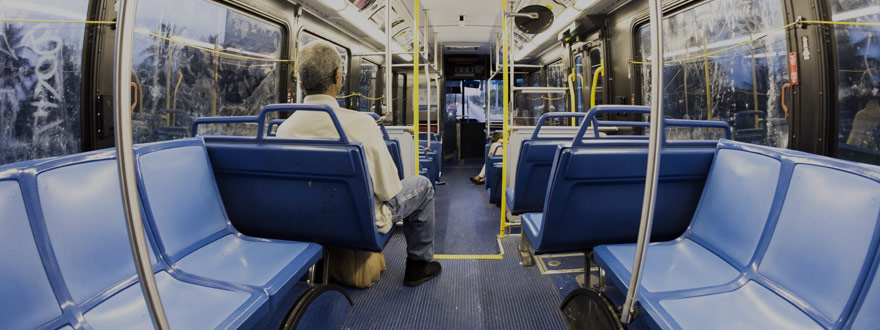5 keys to PTASP-compliant vehicle inspections

The Public Transportation Agency Safety Plan (PTASP) rule by the Federal Transit Administration (FTA) went into effect on July 19, 2019. The FTA has officially extended the deadline to July 20, 2021, but still expects agencies work toward becoming compliant. The PTASP rule requires certain public transit agencies to create safety plans that cover a range of documented policies and procedures—including those for vehicle inspections. These plans should be living documents, regularly evaluated and updated.
As you create and implement the vehicle inspection portion of your safety plan, the following will contribute to its compliance with the PTASP rule.
1 Take a systematic approach.
A systematic approach to vehicle inspections creates a closed loop system for identifying, communicating and correcting issues. Each step is documented and communicated so that the driver operator who identified an issue is informed that it’s been satisfactorily resolved.
Many public transit agencies still use paper-based inspections, which fall short of being systematic—and compliant.
- Forms and documents may be lost or submitted with incomplete information.
- Inspections may be performed but not documented unless an issue is found.
- Minor issues may not be resolved by the next driving shift and get worse over time.
- Driver operators can pencil whip documentation without performing the inspection at all.
For more about the limitations of paper-based vehicle inspections, take a moment to read Where DVIR and eDVIR stop, EVIR® ensures compliance.
2 Keep driver operators engaged.
By definition, vehicle inspections require active employee involvement—as does the PTASP rule. At a minimum, all driver operators, including swing shift and evening operators, need to complete an abbreviated inspection (within the bounds of a pre-trip inspection) to verify that the vehicle is safe to operate.
No one can blindly inspect any vehicle from the comfort of the breakroom; every driver operator needs to be actively involved for optimal safety and ensured compliance.
3 Drive decisions with data.
Every public transit agency should use data to drive decision making for its fleet. Here’s why…
The PTASP rule’s underlying objective is ensuring safe operations and continual improvement; hence the requirement for establishing performance measures and setting targets. Makes sense. To clearly define success, you need clearly defined goals. Moreover, you need data to measure success against those goals and address gaps, including those found by analyzing vehicle inspection results.
Having electronic vehicle inspection records facilitate identifying maintenance and training trends that need to be mitigated. For example, if operators consistently note low tire pressure, a bigger issue such as poor tire quality or faulty tire pressure gauges may be at fault. Analyzing compiled data and trends reveal issues that would otherwise go unnoticed. Know the real problem, address the real problem.
4 Document compliance with procedures.
Remember the adage: If it’s not documented, it’s as good as having not been done.
Yes, documenting compliance can be daunting. But, as stewards of public assets, transit agencies need to demonstrate their adherence to policies, procedures and regulations. Even well-intentioned agencies that create well-planned, well-written policies and procedures may fall short of reliably documenting their own compliance.
Documenting your agency’s adherence to vehicle inspection procedures ensures:
- compliance with the vehicle inspection portion of the PTASP rule
- procedures are being performed consistently
- fleet vehicles are properly inspected every time
- results and data are captured for analysis
Use an electronic inspection reporting solution to streamline the process of following complex, detailed sanitization procedures so you can:
- comply with the FTA’s safety advisory to execute all routine cleaning and surface disinfection
- document which areas are sanitized, at what time, and by who
- monitor cleaning routines to standardize methods and maximize efficiency
- document the type of disinfectant used
Build documentation practices into your vehicle inspection procedures to help keep your safety plan an effective tool for ensuring the health and safety of your operators, employees and riders.
5 Protect against complacency.
Practice doesn’t make perfect; perfect practice makes perfect.
Overfamiliarity breeds complacency. And even the best methods eventually become less effective if done by rote. Ensure your fleet’s vehicle inspections are performed correctly—every time.
- Have trainers observe driver operators.
- Document each vehicle inspection and its results.
- Use an electronic verified inspection reporting solution.
Using an electronic verified inspection reporting solution does just that: verifies that each vehicle inspection is performed properly, and the results are documented. Also consider adding incentives and testing your vehicle inspection practices; maybe hide a small stuffed toy with a gift card under the seat to see if the interior is being thoroughly checked. Find ways to keep driver operators engaged so that lazy vehicle inspection practices can’t take root.





